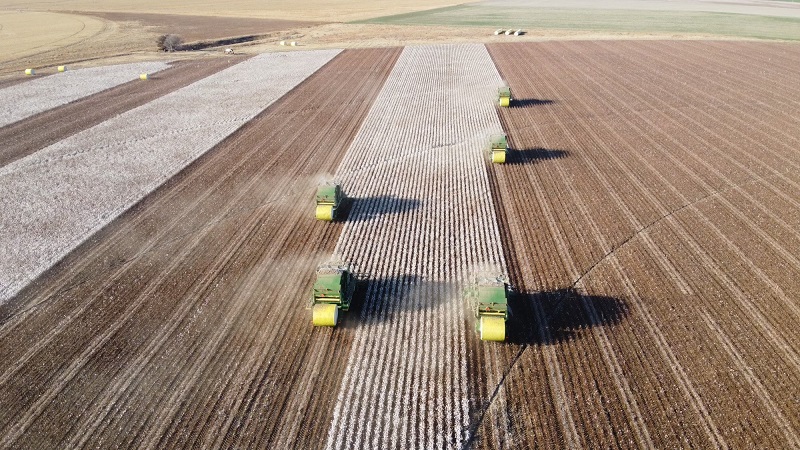High Plains Expects Rise in Cotton Acres
Despite declining cotton acreage nationally and statewide, farmers on the High Plains are projected to grow more cotton to replace other crops that didn’t fare well in 2008.
Cotton acreage nationwide is projected to drop 7% this year from 2008, according to the March 31 USDA report, and 6% in Texas – the largest cotton-producing state.
But early reports indicate farmers will plant 200,000 more acres of cotton in West Texas, bringing the total to 3.5 million acres for 2009, said Roger Haldenby, vice president of operations for Plains Cotton Growers.
The boost follows poor prices for corn and peanuts expected this year, Haldenby said, making cotton a safer bet for producers looking to make decent returns.
“We grow cotton on the High Plains of Texas because we’ve got the right climate for it,” he said. “When we irrigate cotton, we don’t irrigate near the level that we do other crops.”
Less irrigation means less money spent to grow a successful crop, an enticing prospect for farmers going into a tough financial year in drought conditions.
Haldenby said the statewide decline was felt most in areas like South Texas and the Rio Grande Valley, where bad weather and urban sprawl brought down agricultural production as a whole.
Cotton wasn’t the only crop in Texas that took a hit, with farmers reporting they’ll plant less corn, sorghum and peanuts in the coming year.
For farmers like Chuck Rowland, getting an extra year to rotate his peanut fields with cotton may not be such a bad thing if prices pick up in 2010.
Rowland, based in Gaines County, said he was cutting his peanut acreage in half this year, planting a combination of sorghum and cotton in its place.
“If we’re going to just break even on it, I might as well let that ground rest,” he said, adding the extra year would reduce the amount of disease in the soil dangerous to peanut crops.
While keeping a hopeful eye toward the future, Rowland said he’s not sure when he’ll be planting his usual amount of peanuts again. A large surplus of peanuts combined with the salmonella scare earlier this year has created a low market for the product.
“It’s one of those things that right now is so down, there’s no prediction of when it will come back that we know of,” he said.
Designed with the right infrastructure to handle cotton growth, and with farmers most equipped to grow the crop, Haldenby said cotton will always be the go-to crop for producers in West Texas, even during hard times.
“It’s not the crop of last choice, it’s the crop of first choice,” he said. “The fact that we don’t have a lot of alternatives is by the wayside.”








